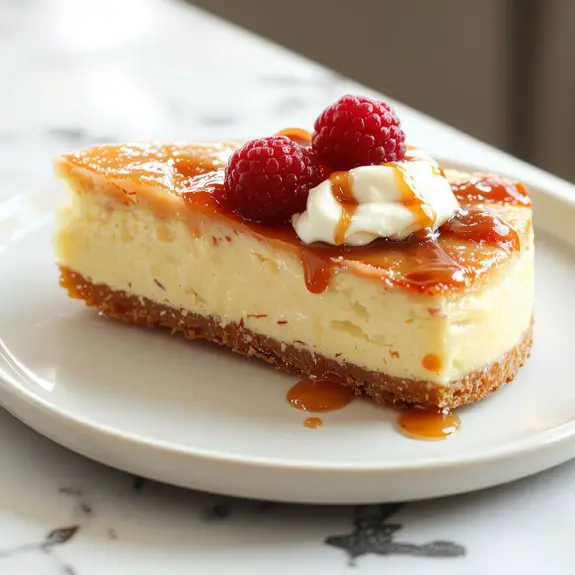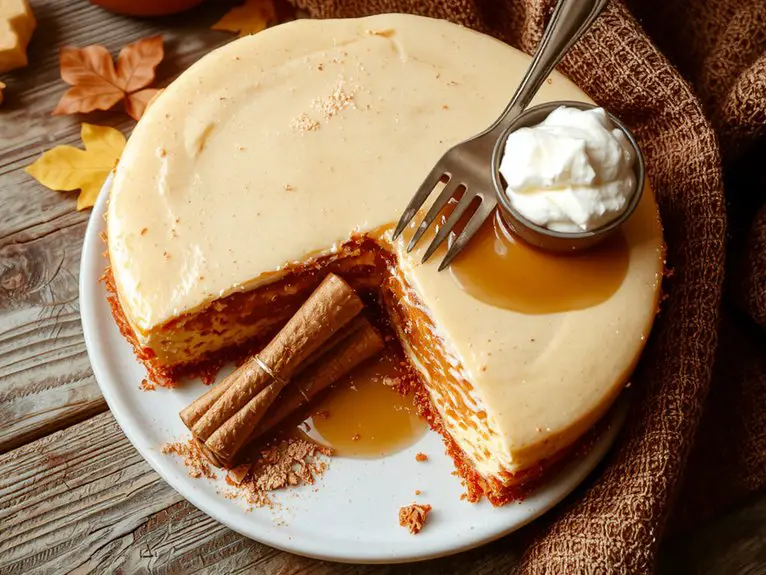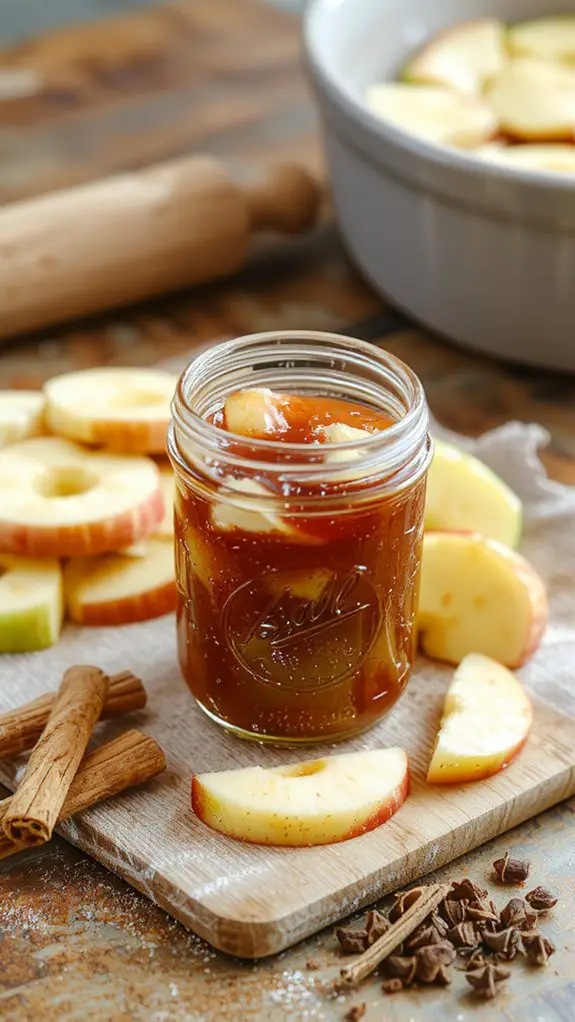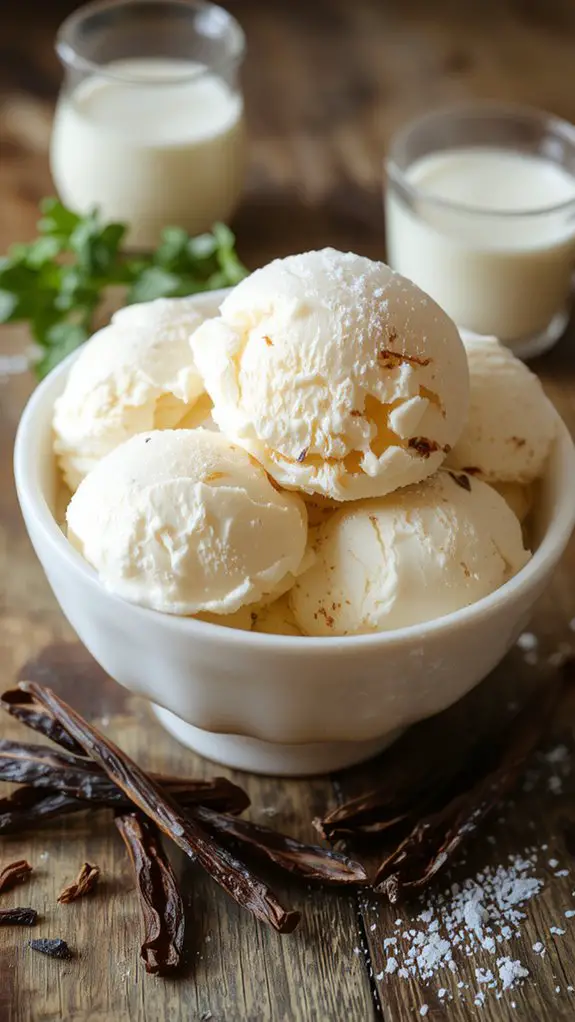Recipe
If you’ve ever been intimidated by the idea of making cheesecake from scratch, let me tell you—this recipe is your game-changer. I’ve made this exact cheesecake countless times, and it’s never failed to impress, whether it’s for a special occasion or just because I deserve a treat.
The secret? It’s all about the perfect balance of creaminess and richness, with a velvety smooth texture that practically melts in your mouth. I swear by using full-fat cream cheese and a touch of vanilla bean paste for that extra depth of flavor.
Add in a buttery graham cracker crust that’s sturdy yet crumbles just right, and you’ve got a dessert that’s as stunning as it’s delicious. Trust me, once you try this, store-bought cheesecake will never compare.
Let’s get baking—you’ve got this!
Ingredients
The secret to a flawless cheesecake starts with the right ingredients—quality matters, but flexibility is key. Below, you’ll find the essentials, plus pro tips and swaps to make this recipe your own.
For the Crust:
- Graham crackers (1 ½ cups, crushed) – The classic base, but digestive biscuits or vanilla wafers work too.
- Unsalted butter (6 tbsp, melted) – Salted butter can be used; just skip any added salt.
- Sugar (2 tbsp) – Brown sugar adds a deeper flavor if you prefer.
For the Filling:
- Cream cheese (24 oz, room temperature) – Full-fat is non-negotiable for that velvety texture. Low-fat versions will leave you with a grainy mess.
- Sugar (¾ cup) – Superfine sugar dissolves faster, but granulated works fine.
- Sour cream (1 cup) – Greek yogurt is a decent substitute, but sour cream delivers the best tang and creaminess.
- Eggs (3 large, room temperature) – Cold eggs can cause lumps. No exceptions here.
- Vanilla extract (1 tsp) – Pure vanilla is worth the splurge—imitation will taste flat.
- Lemon zest (1 tsp) – A tiny but mighty ingredient that brightens the whole dish. Don’t skip it!
Pro Tip: For a crack-free top, avoid overmixing the batter once the eggs are added. Fold gently until just combined.
Optional Upgrades: A splash of bourbon or almond extract in the filling for depth. Fresh berries or a caramel drizzle for serving—because presentation counts.
How to Make the Best Creamy New York Cheesecake
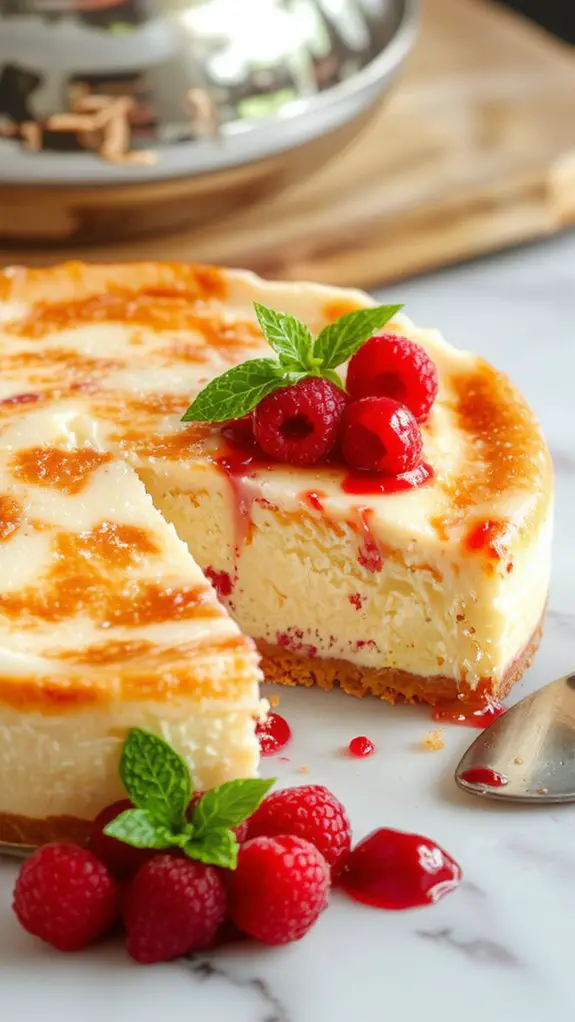
Prepare the crust:
Combine graham cracker crumbs, sugar, and melted butter in a bowl until the mixture resembles wet sand. Press it firmly into the bottom of a springform pan, using the back of a measuring cup to create an even layer.
Bake at 325°F (160°C) for 10 minutes, then let it cool completely. A firm, slightly golden crust is key to preventing sogginess.
Make the filling:
In a large mixing bowl, beat the cream cheese on medium speed until smooth and creamy, about 2 minutes. Scrape down the sides of the bowl to guarantee no lumps remain.
Overbeating at this stage can introduce too much air, leading to cracks later.
Add the sugar:
Gradually add the sugar and continue beating until fully incorporated. This step helps dissolve the sugar evenly, resulting in a silky texture.
Incorporate the eggs:
Add the eggs one at a time, mixing just until combined after each addition. Overmixing here can create air bubbles, which might cause the cheesecake to crack during baking.
Add the finishing touches:
Mix in the sour cream, vanilla extract, and a pinch of salt until smooth and homogeneous. Use a spatula to gently fold any unmixed ingredients from the bottom of the bowl.
Bake the cheesecake:
Pour the filling over the cooled crust and smooth the top with a spatula. Place the springform pan in a larger baking dish and fill the dish with hot water until it reaches halfway up the sides of the pan.
This water bath prevents the cheesecake from drying out and cracking. Bake at 325°F (160°C) for 55–65 minutes. The edges should be set, but the center should still have a slight jiggle when shaken gently.
Cool and chill:
Turn off the oven, crack the door open, and let the cheesecake cool inside for 1 hour. Transfer it to the fridge and chill for at least 4 hours, or preferably overnight.
This step allows the cheesecake to set fully and develop its signature creamy texture.
Serve:
Run a knife around the edges of the pan before releasing the springform. Slice with a warm, clean knife for neat portions. Enjoy as is or top with fresh fruit, caramel sauce, or whipped cream.
Nutrition
This homemade cheesecake is rich and creamy, but also packed with calories and fats. Below is the nutritional breakdown per serving.
| Nutrient | Amount per Serving |
|---|---|
| Calories | 450 kcal |
| Total Fat | 30 g |
| Saturated Fat | 18 g |
| Cholesterol | 150 mg |
| Sodium | 300 mg |
| Total Carbs | 35 g |
| Sugars | 25 g |
| Protein | 8 g |
Chef Tips
When making this cheesecake, I always recommend using room-temperature ingredients—they blend smoother and prevent lumps.
Don’t overmix the batter; it can trap air and cause cracks. Bake in a water bath to guarantee even cooking and a creamy texture.
Let it cool gradually in the oven with the door slightly ajar. Chill it overnight for the perfect firmness and flavor. Patience makes it perfect!
Frequently Asked Questions
Can I Use Low-Fat Cream Cheese?
I can use low-fat cream cheese, but it might change the texture and richness of the cheesecake. It won’t be as creamy or dense as using full-fat, but it’ll still work if I’m aiming for fewer calories.
How Do I Prevent Cracks in My Cheesecake?
I always avoid overmixing the batter and bake my cheesecake in a water bath to keep it moist. I let it cool gradually in the oven with the door slightly open to prevent cracks from forming.
Can I Freeze Leftover Cheesecake?
Yes, I can freeze leftover cheesecake. I’ll wrap it tightly in plastic wrap or foil, then place it in an airtight container. When I’m ready to eat it, I’ll thaw it in the fridge overnight.
What’s the Best Way to Store Cheesecake?
I keep my cheesecake fresh by wrapping it tightly in plastic or foil, then storing it in the fridge for up to 5 days. If I want it longer, I’ll freeze slices wrapped well to avoid freezer burn.
Can I Substitute Graham Crackers for the Crust?
I’d say you can swap graham crackers for the crust—just crush ’em, mix with butter and sugar, then press into your pan. They’ll give a sweet, slightly crunchy base that works great with cheesecake.


